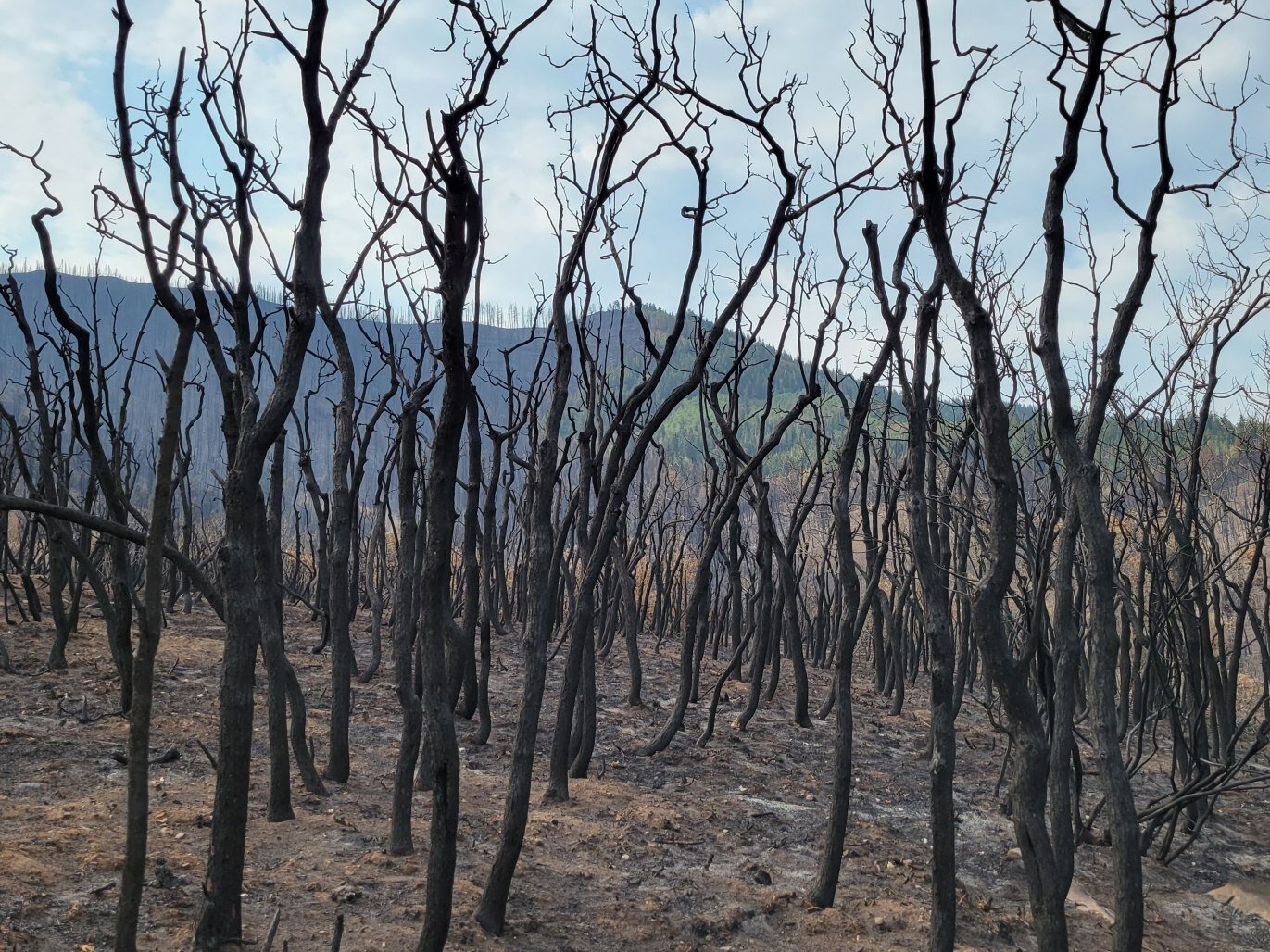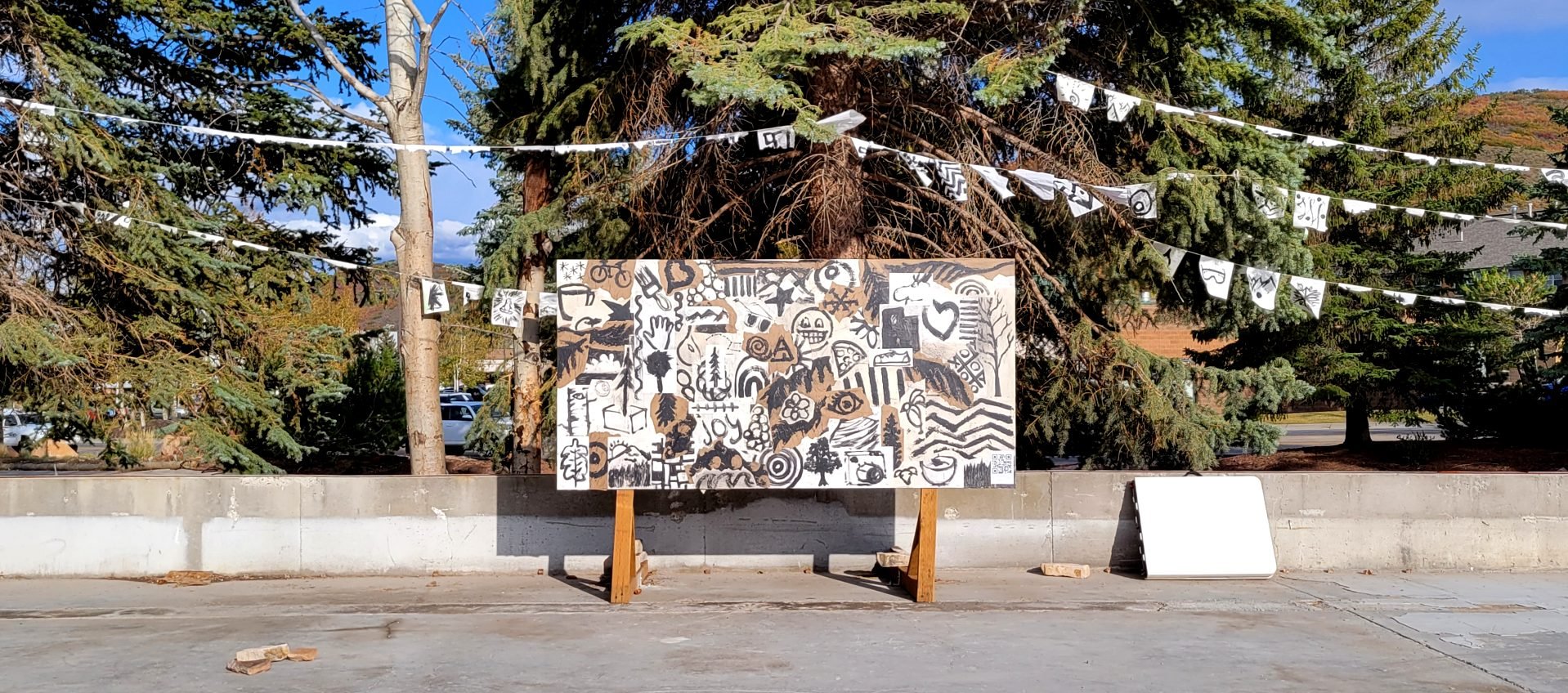
Reflecting on the Parley’s Canyon Fire.
Turning Ashes into Art.
This collaborative installation project speaks to the resilience of Park City in response to Parley's Canyon Fire while also recognizing our vulnerability at the hands of climate change. Using handmade charcoal paint created from charcoal remains of the Parley's Canyon Fire, participants helped create gestural drawings on Intention Flags that were strung together and hung amongst the trees of Bonanza Art Park. The hope for this project is that it will spark discussion about improved fire management practices, ways to reduce our carbon footprint, and our stewardship of the land, water, air, and forests. In addition, we worked to raise funds through TreeUtah to help support a tree planting on the fire site.
The creation of the mural and the Intention Flags took place on Tuesday, September 28th at the Bonanza Art Park.
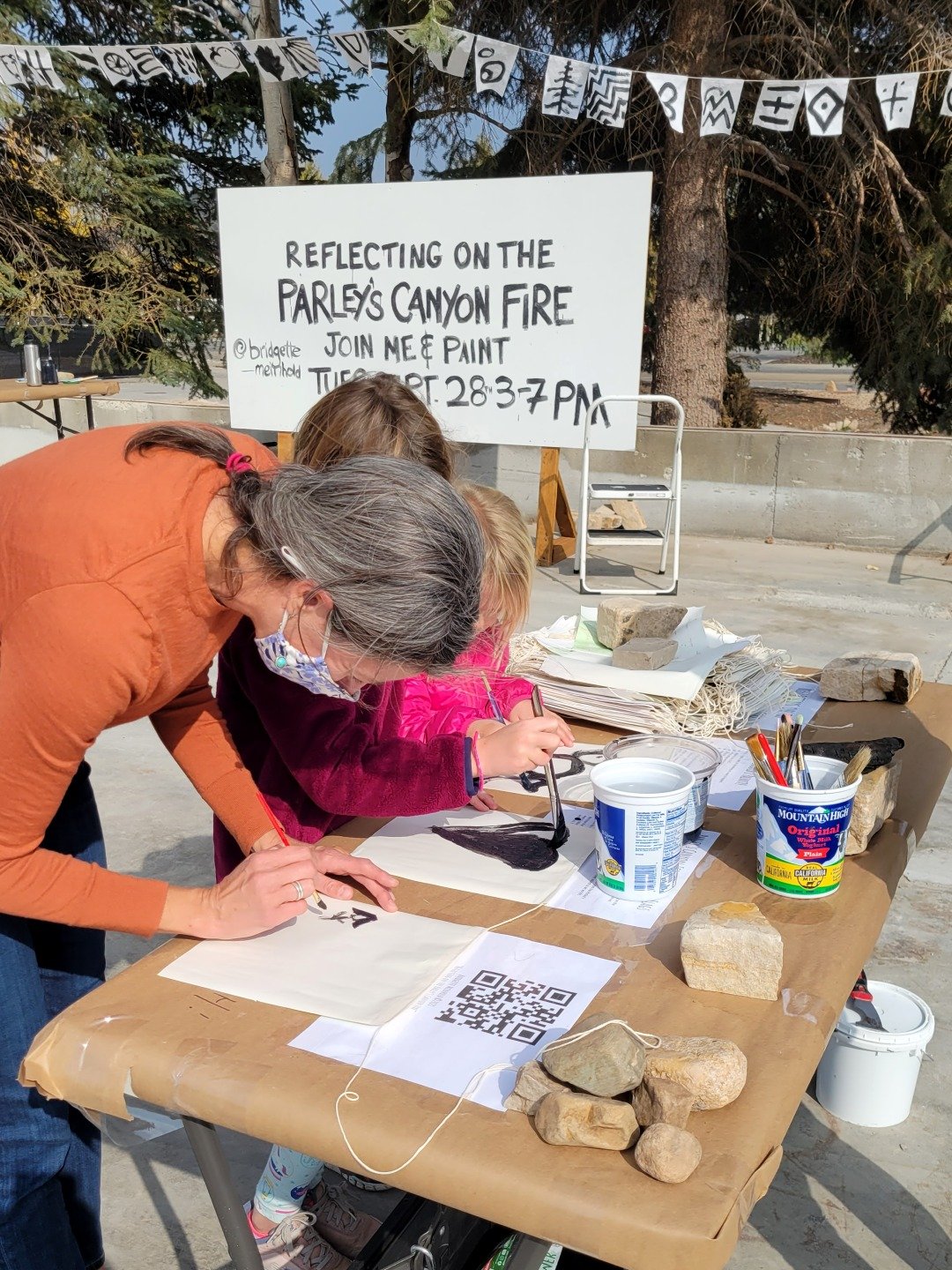
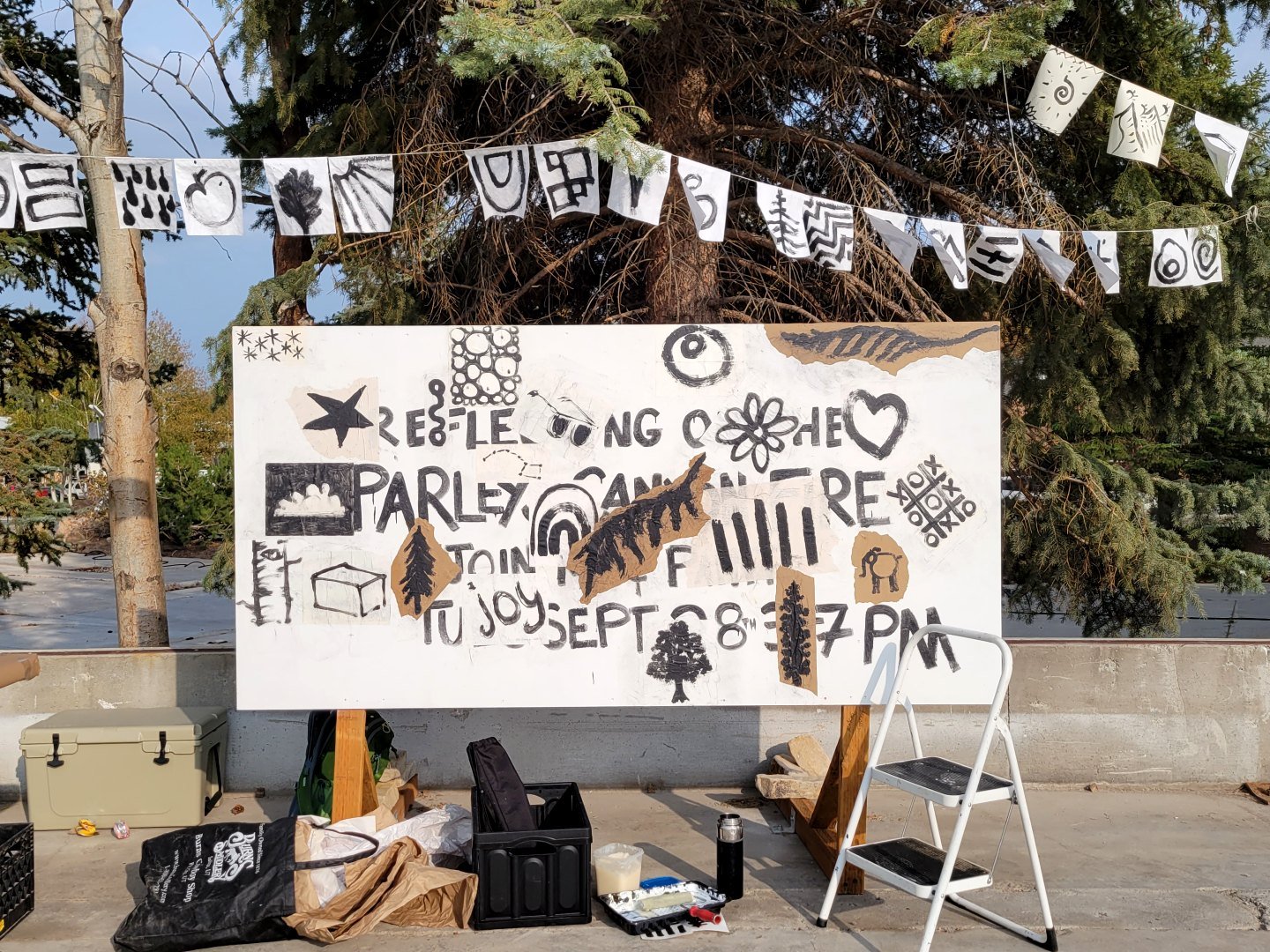
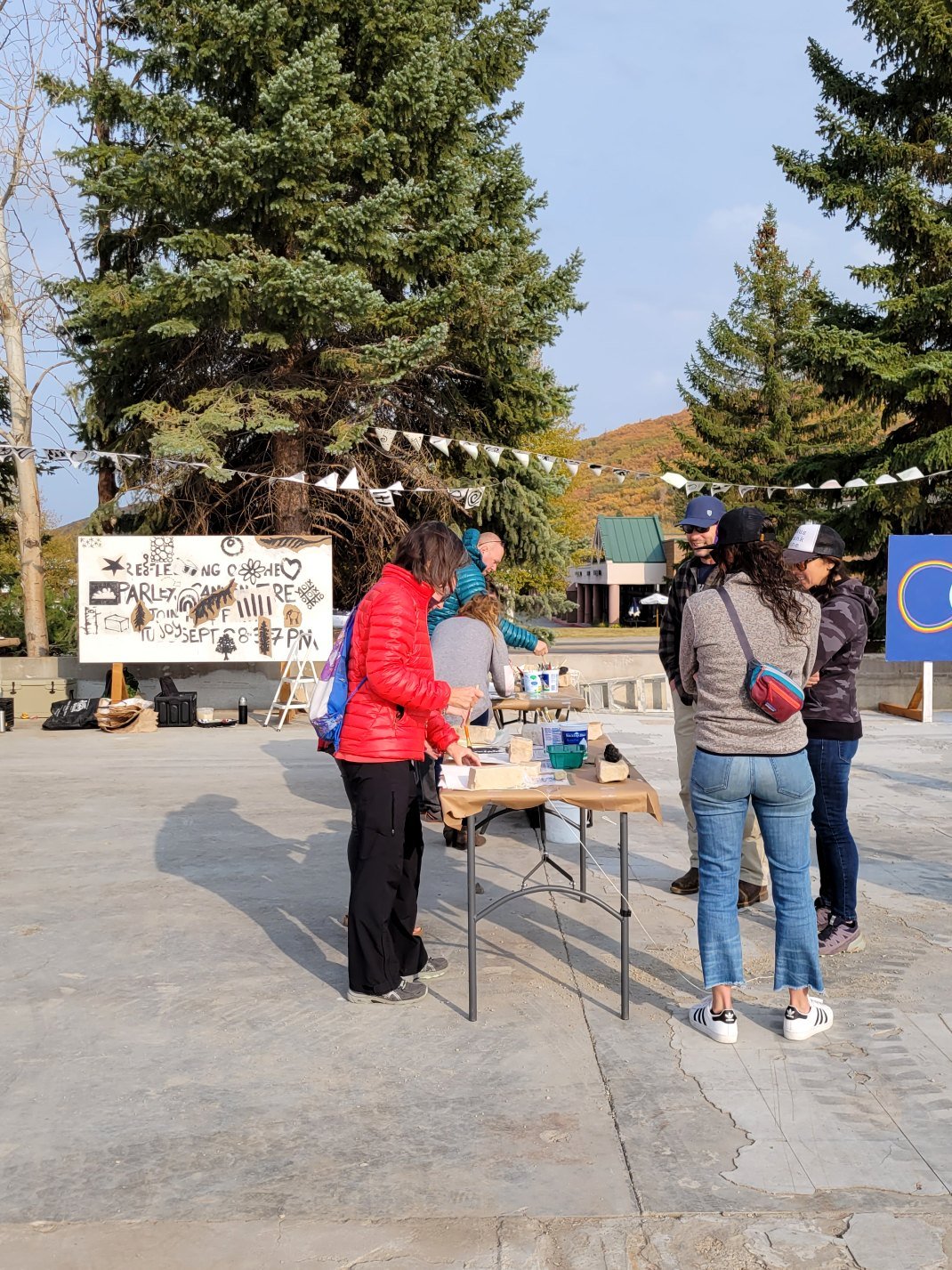
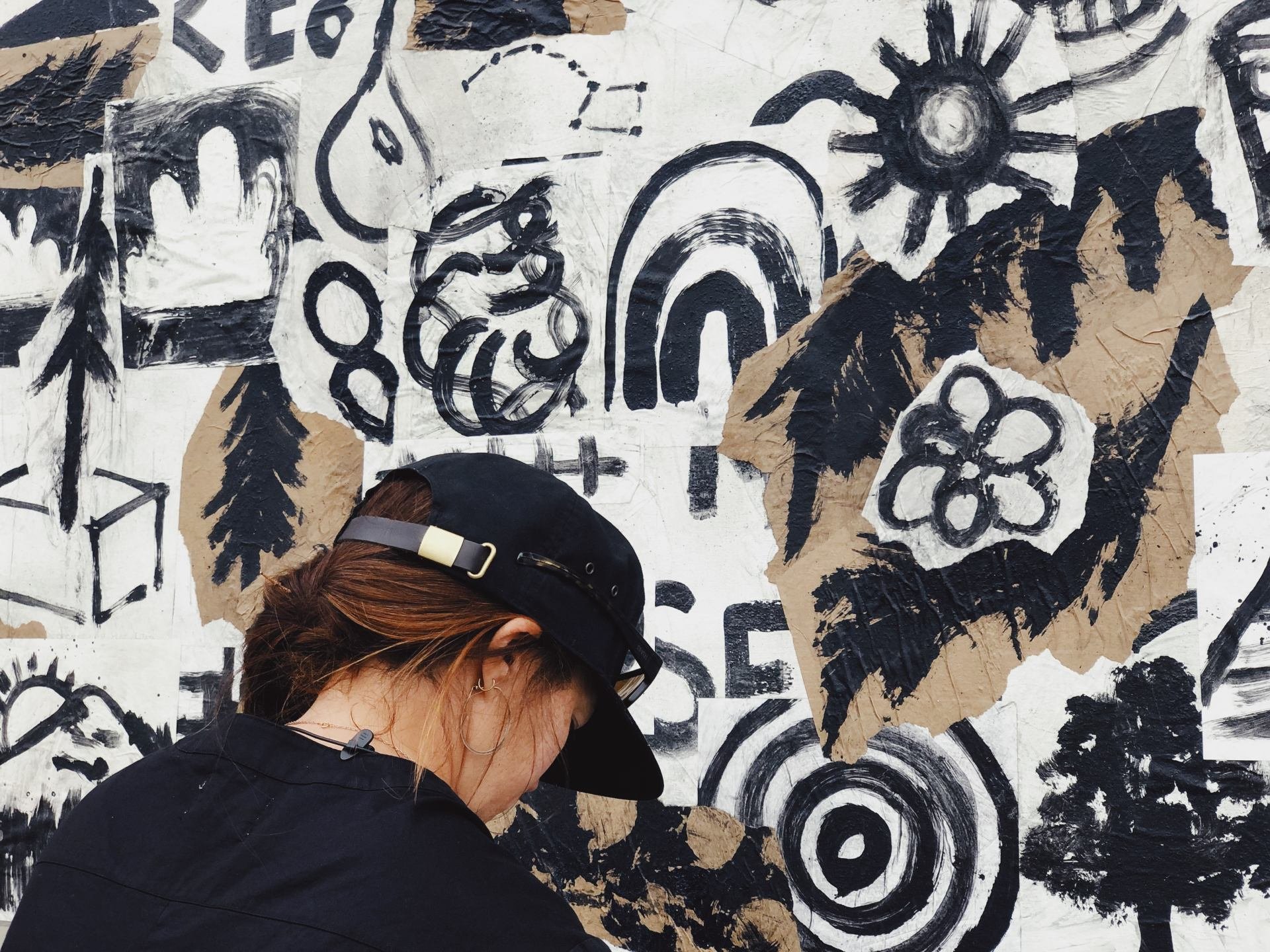
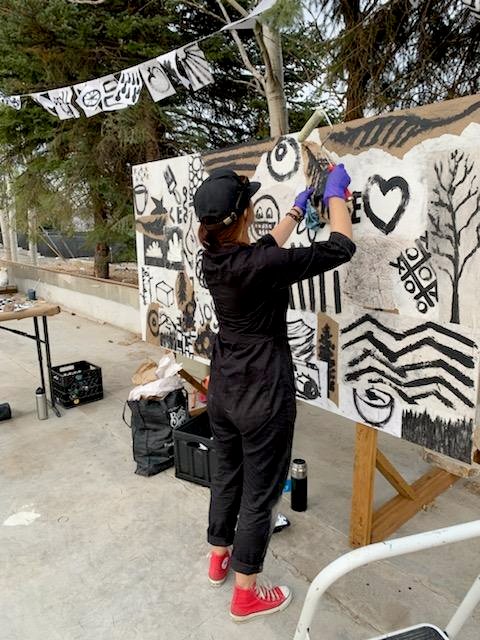
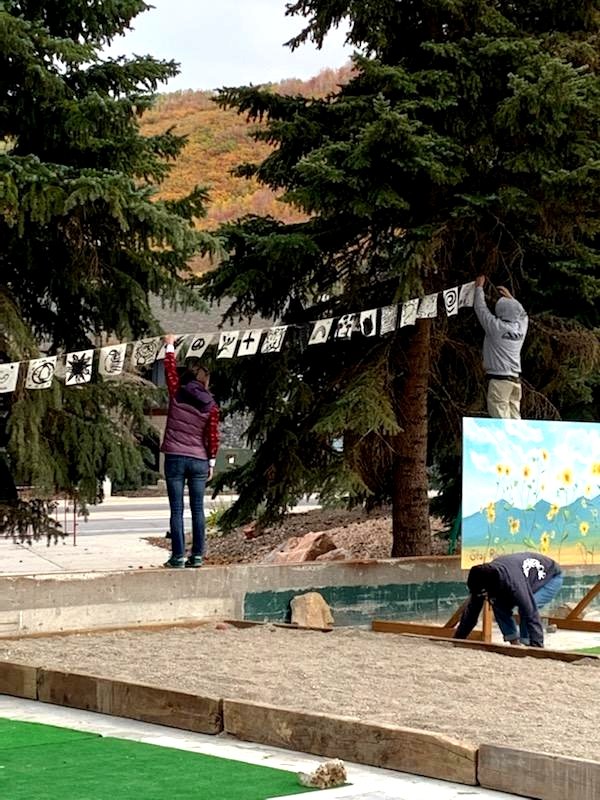
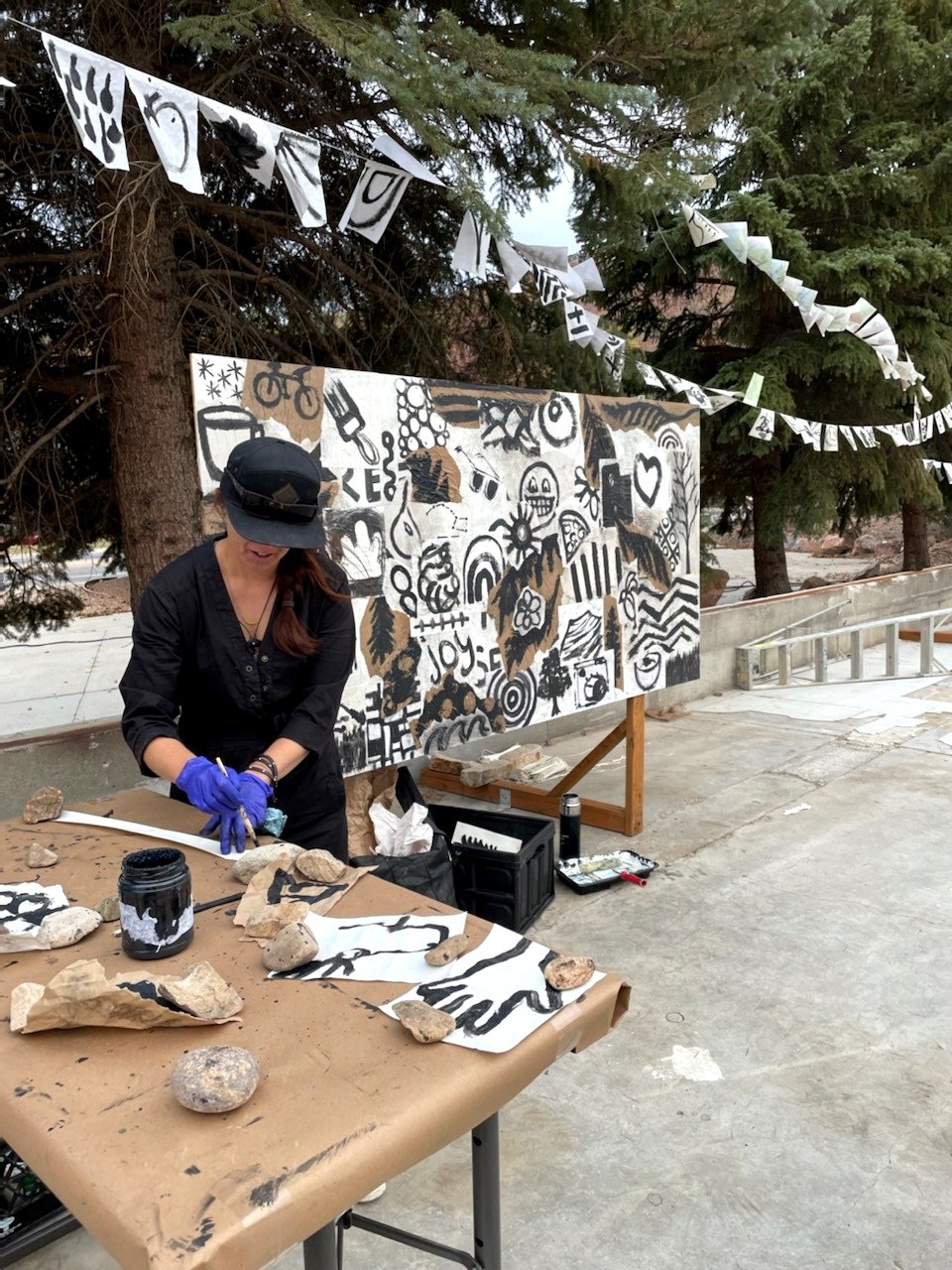

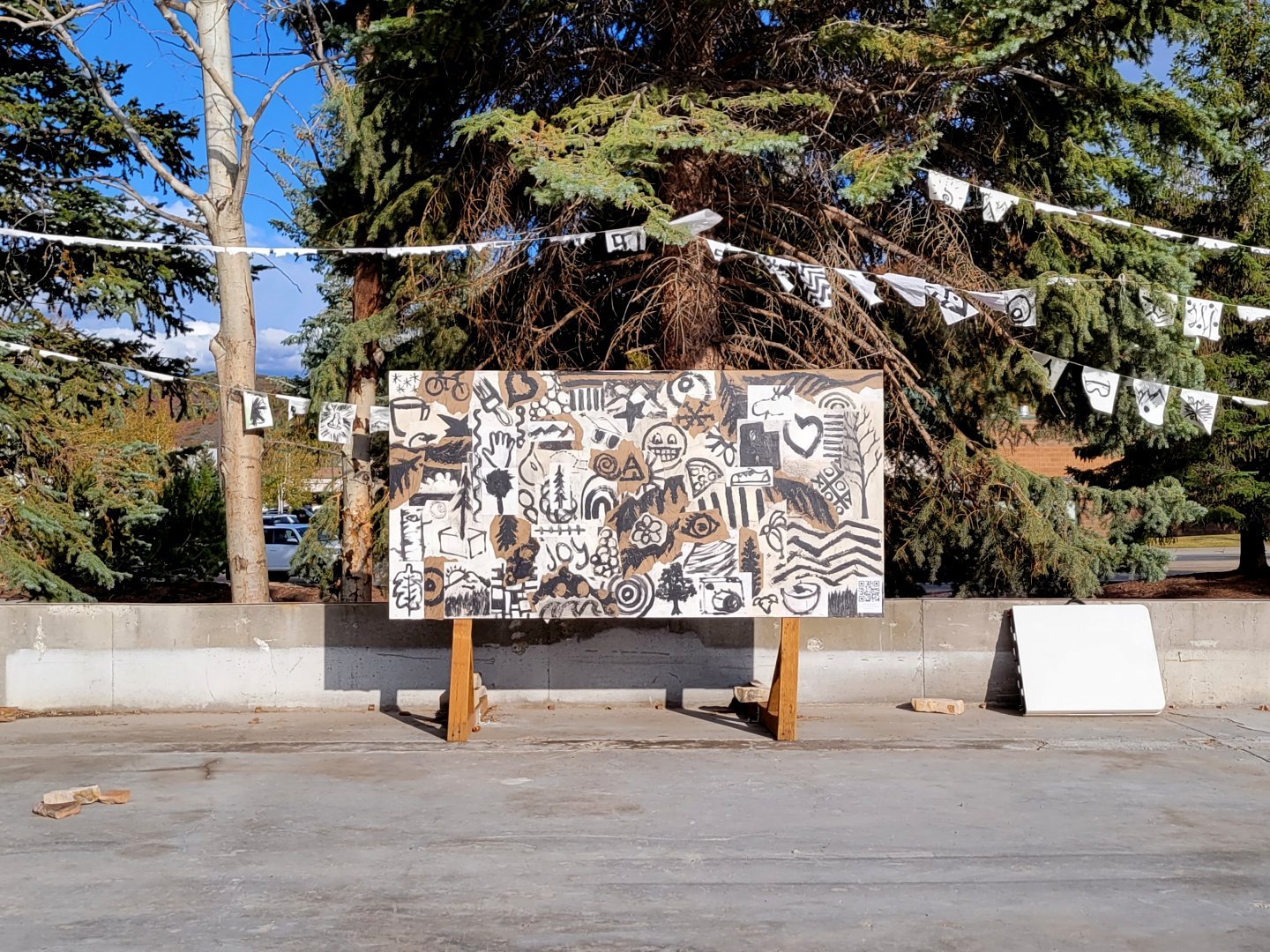
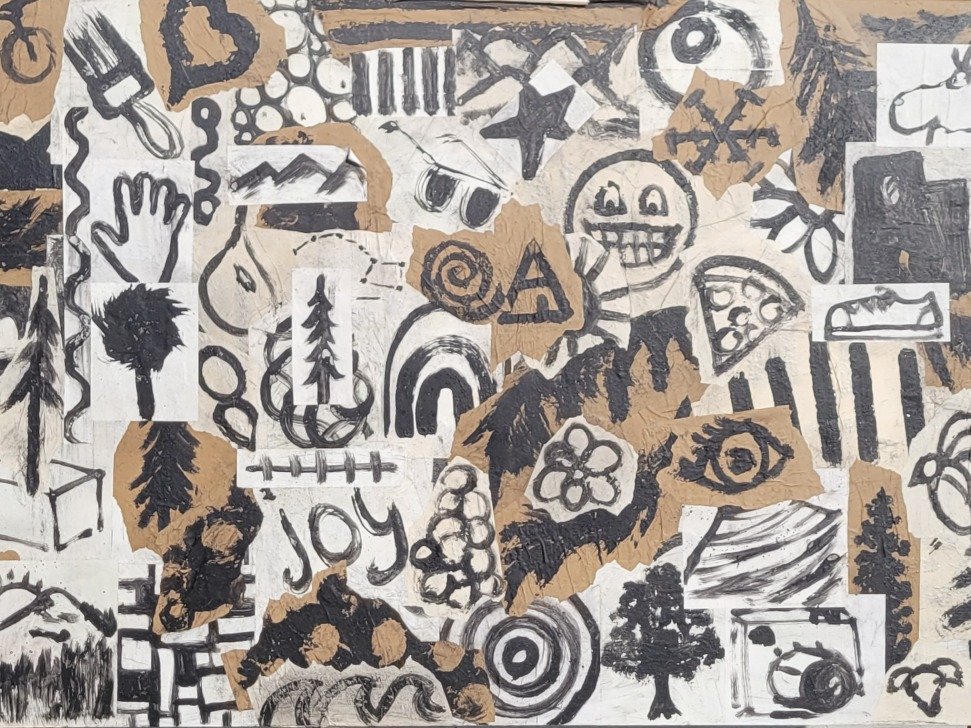
Even before the Parley’s Canyon Fire erupted, forest fires were heavy on my mind after dealing with a few close calls near my house and feeling the suffocating effects of smoke from the California and Oregon fires. We all hid inside next to our air purifiers when the smoke invaded and waited impatiently for it to clear so we could continue with our normal lives enjoying the outdoors. We willed the winds to shift, danced so rain would come, wondered when the smoke would clear, all while praying for those losing their homes in California and Oregon, but hoping that nothing near us would catch fire.
But recently, we didn’t just feel the effects of bad air quality - we were actually in the midst of our tragedy when a fast moving fire started on the side of I-80 and rushed towards Summit Park on August 14th, 2021. We all watched in horror as the fire raced up the hillside and our air space was crowded with VLATs and helicopters careening to put the fire out before it reached the ridgeline. If you weren’t evacuated, then you certainly had friends or family living in Summit Park, Timberline, or Pinebrook that were evacuated. We were more than concerned - we were scared. People were evacuated for 4 days as crews battled the blaze and then miraculously, we were saved when the rains poured down.
Aftermath of the Parley’s Canyon Fire that started on August 14th near Park City, UT and evacuated over 6,000 people.
Photo of the Parley’s Canyon Fire from Summit Park. Photo by Matt Meinhold
My husband Matt, a captain with the Park City Fire Department, was on duty when the fire started and assisted with the efforts to stop the fire’s growth and protect homes in Park City. He sent me pictures as updates to let me know what was going on, how bad it was, and that he was safe. The people who responded to the fire did an amazing job and they were able to put the fire out quickly and efficiently. We were also quite lucky with a healthy dousing of rain a few days later that helped douse the fire. But we got lucky. Very lucky.
In comparison, the Caldor Fire in California started on the same exact day and they were not as lucky. A month after that fire started, it was only 76% contained and ripped through more than 220,000 acres, evacuating over 22,000 people and burning over 900 structures. The Parley’s Canyon Fire burned less than 600 acres, no structures were destroyed and the fire was 100% contained within 5 days. Let this be a lesson to us. We are not immune to the dangers of forest fire and we need to be better prepared.
The Parley’s Canyon Fire rattled us all and has left us feeling vulnerable in our own town and homes. Some were physically evacuated, and many were kind enough to take people into their homes to shelter them while they waited. In addition, many people from our community worked the arduous hours to protect our town and we are forever grateful for those who risked their lives to make a difference. While my husband was out working to put out the fire and protecting homes in Summit Park, I was sitting at home pouring over twitter feeds and listening to the emergency responders scanner waiting for news and overall feeling quite helpless.
I suspect many people also felt helpless during that time. There wasn’t much to do except pray and think positively. But now we have time to reflect, and I want to give people a way to process their emotions from the fire and use its ashes to make art.
Fire in the West.
The New Normal.
The west has always burned. There have always been fires due to natural causes like lighting strike, but what we are seeing now is not normal. Forests use to burn in smaller patches, more isolated, with less crown fires that burned the understory getting rid of the dead and fallen trees making room for new growth. After years of forest mismanagement, fire suppression, drought, and climate change, wildfires across the globe are raging into mega fires and destroying huge swaths of forests. In addition, our population has swelled and people have moved beyond city limits to inhabit areas of forest and wilderness that are right in prime areas for forest fire. So now, we have more people in the crosshairs as well as more dangerous conditions resulting in massive fires that destroy towns, homes, lives and significantly affect our air quality. This is not how forests used to burn, and now we have to work even harder to protect people, property, and our precious forests.
But fire is not all bad, in fact it is quite necessary for healthy forests. Before the fire, I had attended a lecture on fires by Dr. Patrick Belmont, a professor fire and watershed sciences at Utah State University, and I came home thinking about renewal after fires and the cycle of forests in the West, which often need fire for regrowth. The lodgepole pine for instance, actually needs the heat of a fire to release the seeds from its serotinous cones. Fire helps create room for new growth, then trees emerge from the earth, grow, age, decline and return in the cycle after the next fire. We are all connected to each other, but also to the land we inhabit in this cycle of decline and growth. So on one hand fire is destructive and dangerous, but it is also necessary for growth and recovery. We need to find a new balance, a new to manage the forest and to restore the indigenous practices of Native Americans and how they used good fires to protect our lands.

Processing the Fire.
I spent the week afterwards processing the fire in my sketchbook painting ideas about growth and regeneration as well as painting images my husband had taken of the fire. Painting for me is meditation and catharsis - a way to relieve my brain and release emotions.
Meanwhile as I am painting, I am thinking about ways to help. How can I get more trees planted, how can I raise money for causes that can help, how can I raise awareness about forest fires in the west? How can I process my own emotions and get from a place of fear to a place of productivity?
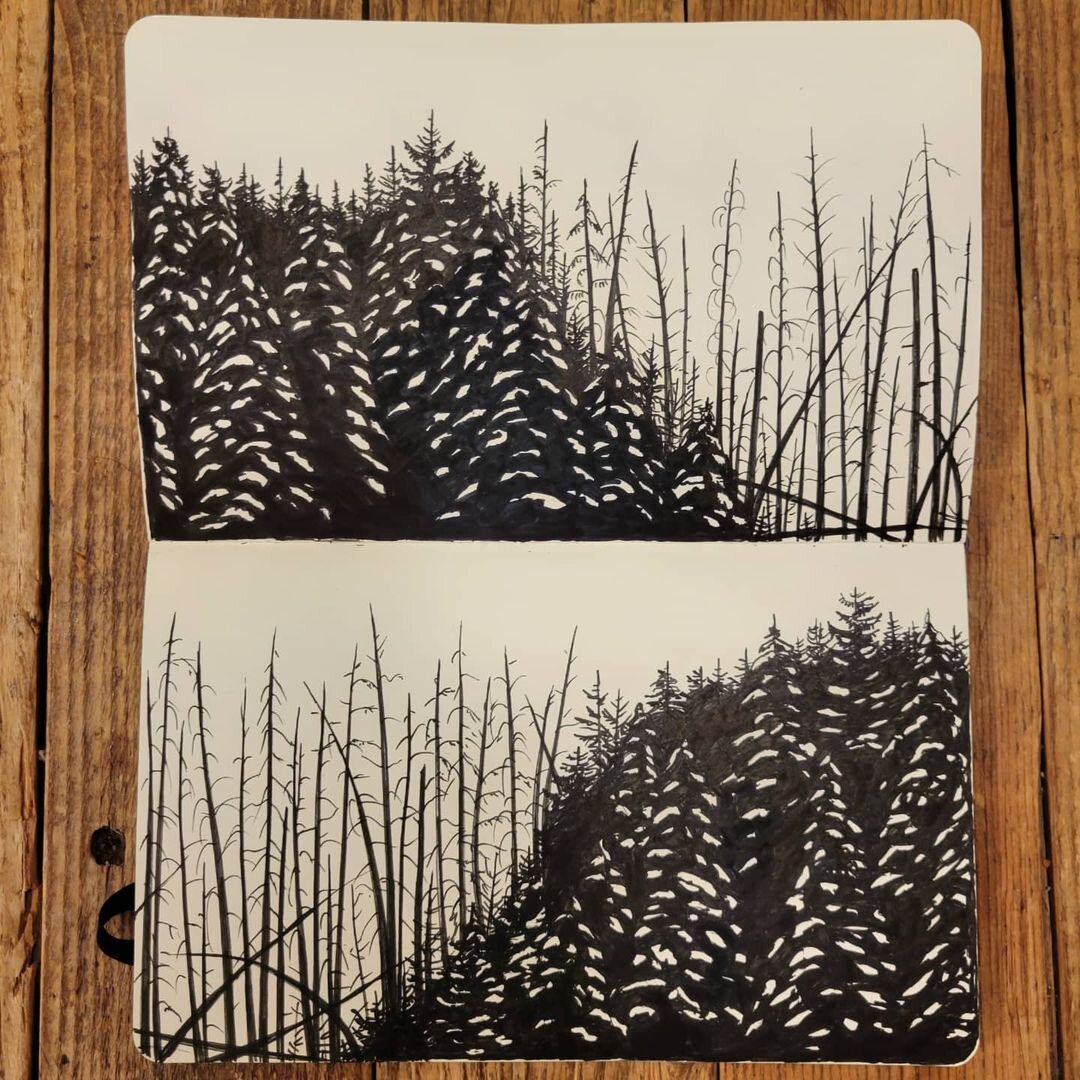
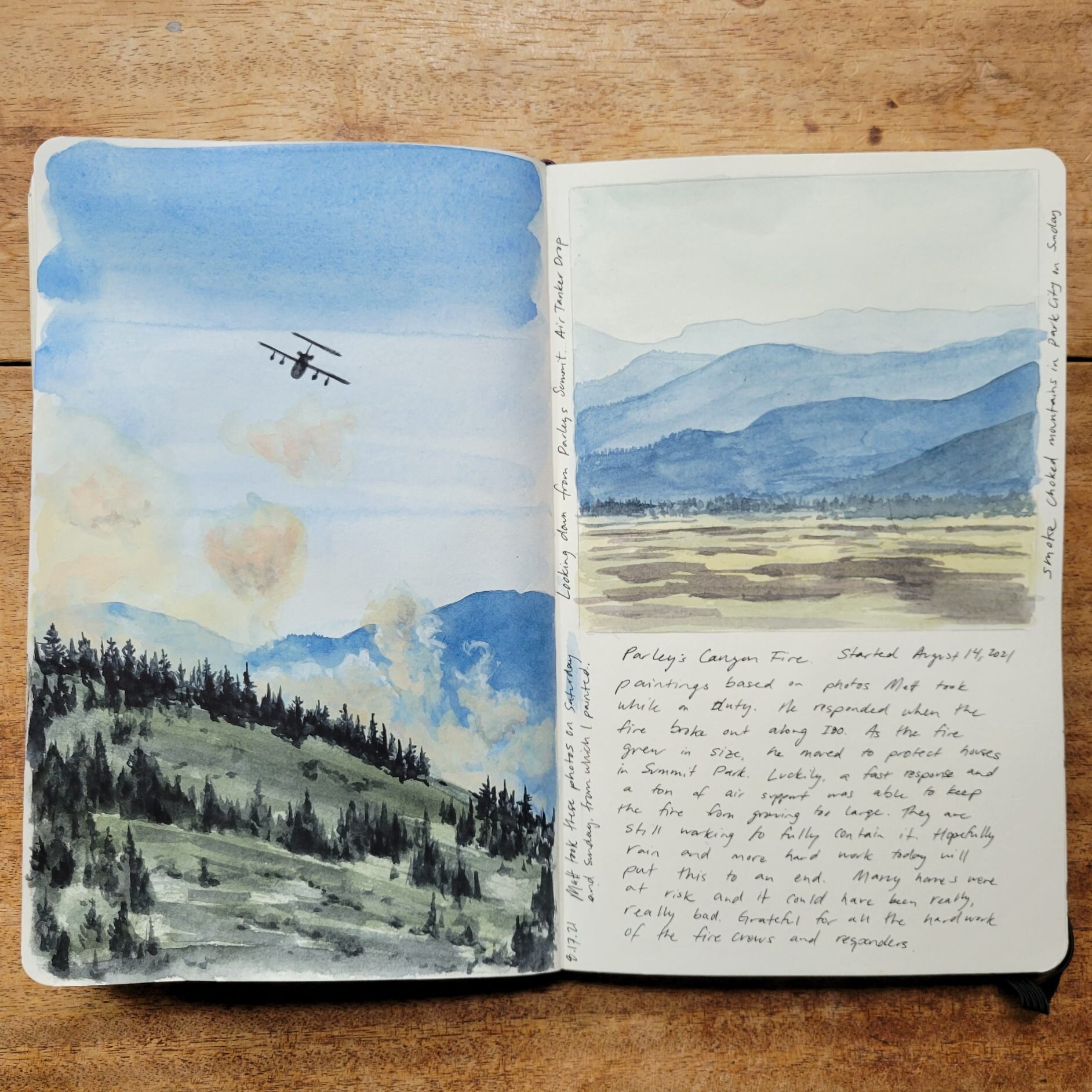
Bonanza Art Park Mural.
And so, not too many days later, I was given a chance to process the fire on a larger scale at the Bonanza Art Park in Park City. I was awarded a mural within the Art Park to create a work that reflects on the fire and asks people to work collaboratively with me to help turn ashes into art. The inspiration for the project came from when I made 100 gestural paintings using a forest fire ink that I had made from a fire in the Uinta Mountains. Each painting is simple, reflexive, and an exploration of my thoughts as they came to me. Think of it like a stream of consciousness. But when put together, the paintings take on a larger meaning - my wave of emotions during a moment in time.
I created an 8x4 foot collaged mural using recycled papers and the forest fire paint from the Parley’s Canyon Fire. In addition, I asked people to collaboratively create a larger work of consciousness about their feelings at this time. Participants used the the forest fire charcoal paint to reflect on their feelings by painting on Intention Flags. We paited hundreds of these flags and string them up around the Art Park to make our intentions known about what we want for the future. Painting on the Intention Flags is a chance to let the Universe know what we hope for in the future. Participants were asked to paint their hopes, dreams, something you love, or anything that comes to mind.
Participants were asked to come to the Bonanza Art Park on Tuesday, September 28th from 3-7pm to paint on the Intention Flags while I worked on the mural.
The Bonanza Art Park is located on the corner of Munchkin Road and Bonanza Drive in Park City, Utah. This event was open to the public and free. In addition to my live painting and collaborative work, the park will also featured a live band that evening, a food truck, lawn sports and more.
A view of the Parley’s Canyon Fire from the ridgeline
Charcoal collected from the forest fire
After collecting a large bucket full of charcoal pieces from the fire site, we processed the charcoal into a fine powder using a coffee grinder and a sifter. Then, the charcoal powder is mixed with acrylic medium to handle the outdoor elements and create a workable and durable paint.
This project literally uses ashes of a forest fire to make art and create intentions for a better future.
Additional Learning Resources.
Learn more about wildfires in the West.
Fighting Fire with Fire | How to Save a Planet Podcast
“From California's crimson skies to smoke so thick along Colorado's front range that sent people indoors for days, this year has been an especially bad one for extreme wildfires. On today's episode, we ask, how did the wildfires get so bad – and what can we do to address them?”
Fire Ecology with Gavin Jones | Ologies Podcast
“As so many of us around the globe are sharing in this burning sensation, what better time than now to sit down and fire off a lot of questions at Fire Ecologist, Dr. Gavin Jones. We talk about what fire is, how hot it burns, fire trends, tinderboxes, lots and lots of forest fire flim-flam, tolerant wombats, Angelina Jolie Movies, cunning pine cones, thick bark, Indigenous fire stewardship and more. This episode might get you pretty heated but that’ll only release seeds of new ideas and hope, because it's serotinous. That bad joke will make sense after you listen.”
Boulder Vs Hill | This American Life Podcast
“What the day-to-day business of saving the world looks like. We visit with one group of people who are trying to rescue us from something very large, and another group trying to rescue us from something very small.”
Wildfire Analysis and Tools to Combat | Vox.com
How Decades of Stopping Forest Fires Made Them Worse
The West is burning. Climate change is making it worse.
We Must Burn the West to Save It
We Can’t Just Run Away From Wildfires
Wildland Fire | US Forest Service
Firewise Program - How to Save Your Home from Wildfire | NFPA
Track Wildfires in the West | NY Times
Live wild fire tracker in the west keeps track of all active fires as well as where previous fires occurred. Also includes a smoke tracker to monitor AQI.


